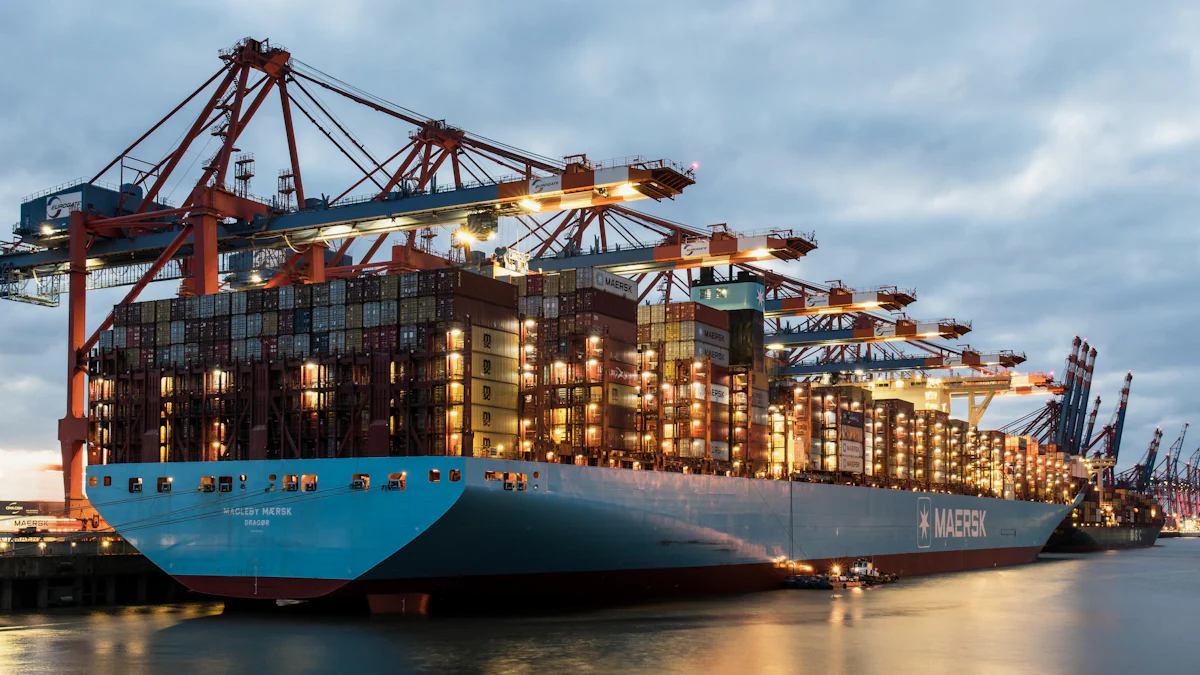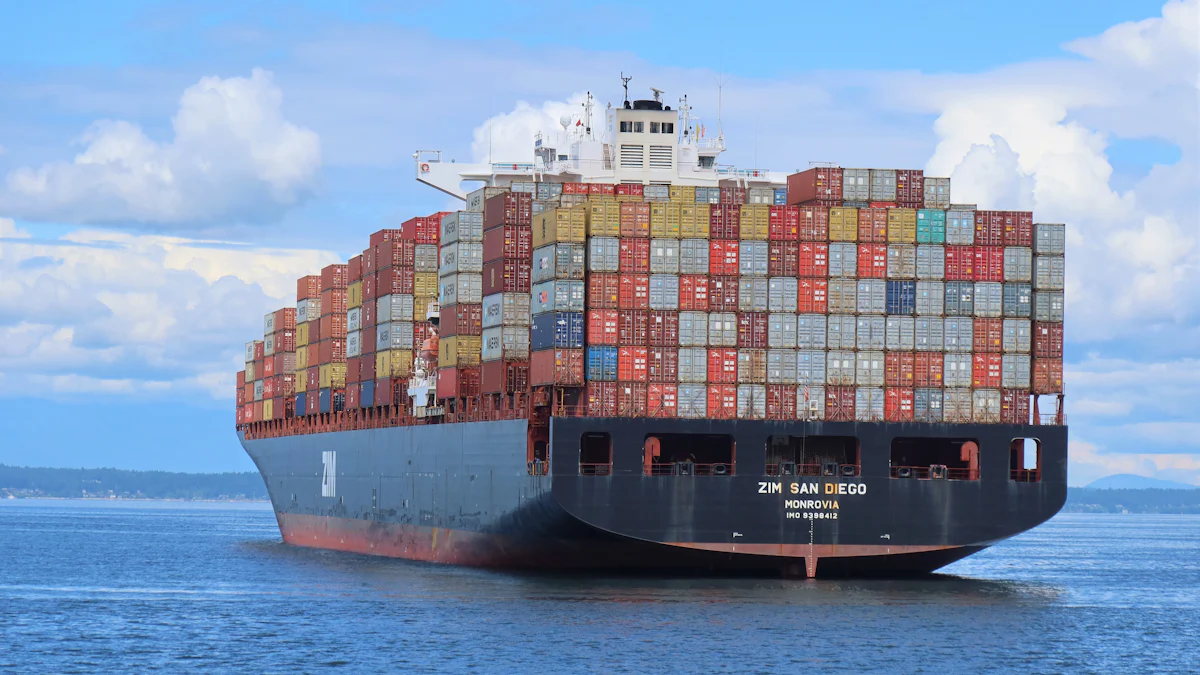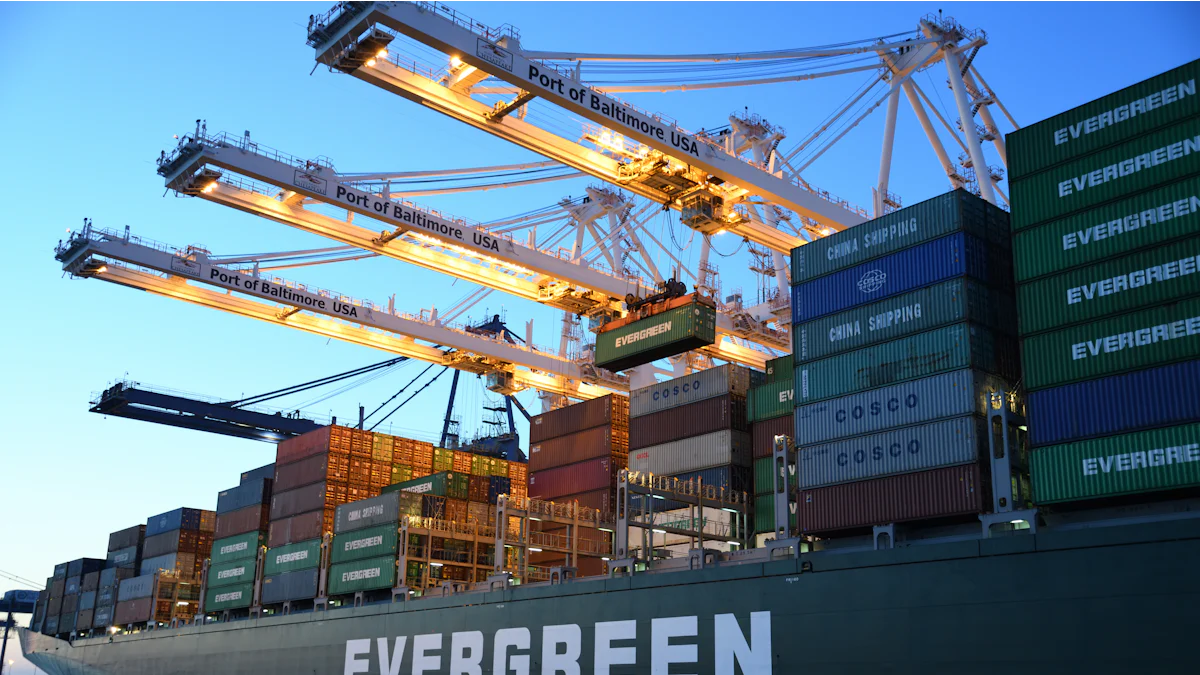Latest Trends in the Ocean Freight Market

The ocean freight industry serves as the backbone of global trade, transporting over 80% of goods worldwide by volume. In this ocean freight market update, recent trends reveal a dynamic landscape shaped by growing consumer demand, geopolitical tensions, and evolving trade routes. Global maritime trade increased by 2.4% in 2023, reaching 12.3 billion tons, with Asia handling 63% of container traffic. Despite challenges like port congestion and capacity shortages, the market shows resilience. Future predictions indicate steady growth, driven by economic recovery and e-commerce expansion. Navigating global freight trends requires businesses to adapt to current market conditions and prepare for shifting dynamics in ocean shipping.
Key Takeaways
The ocean freight market is projected to grow steadily, with global shipping volumes expected to increase by 2.3% by 2025, driven by economic recovery and e-commerce expansion.
Businesses should closely monitor port congestion and operational challenges, as these can disrupt supply chains and increase costs; investing in innovative solutions can help mitigate these issues.
Adapting to shifts in trade routes and regional dynamics is crucial; companies should explore intermodal solutions like JUSDA’s China-Europe Express Rail to enhance logistics efficiency.
Freight rates are expected to remain volatile; businesses must analyze rate trends and implement strategic planning to secure competitive shipping costs.
Sustainability is becoming increasingly important in the ocean freight market; adopting low-carbon fuels and green technologies can help companies align with environmental goals and reduce operational costs.
Leveraging digital tools and technologies can enhance visibility and efficiency in logistics operations, allowing businesses to make informed decisions and optimize their supply chains.
Collaboration across the supply chain is essential for achieving sustainability; partnerships can drive eco-friendly practices and improve overall operational efficiency.
Current Market Overview: An Ocean Freight Market Update
Key Indicators of Current Market Conditions
Global shipping volumes and trade flows
The freight market continues to demonstrate resilience, with global seaborne trade projected to grow by 2.3% by 2025. This steady rise reflects the adaptability of the maritime industry in overcoming recent challenges. Container volumes are expected to increase by 5.0-6.0% in 2024, followed by a growth rate of 3.0-4.0% in 2025. These figures highlight robust demand for shipping services, driven by economic recovery and expanding e-commerce activities. Businesses must monitor these trends closely to align their logistics strategies with emerging opportunities.
Asia remains a dominant player in the freight market, handling 63% of global container traffic. This region's pivotal role underscores its influence on trade flows and shipping volumes. The impact on global trade is evident as businesses increasingly rely on efficient maritime routes to meet consumer demands. Strategic alignment with carriers becomes essential to capitalize on these growth opportunities.
Port congestion and operational challenges
Port congestion continues to pose significant challenges for the freight market. In September 2024, congestion levels rose to 7.1%, effectively removing 2.2 million TEU of capacity from the global fleet. This bottleneck disrupts supply chains, leading to delays and increased costs. Operational inefficiencies at ports further exacerbate these issues, creating hurdles for businesses relying on timely deliveries.
Despite these challenges, the industry shows resilience. Analysts emphasize the importance of adopting innovative solutions to mitigate congestion and enhance operational efficiency. Investments in port infrastructure and digital technologies can play a crucial role in addressing these bottlenecks. By improving resource allocation and streamlining processes, businesses can navigate these obstacles effectively.
Recent Developments in the Ocean Freight Market
Post-pandemic recovery and its impact on shipping
The post-pandemic recovery has significantly influenced the freight market. Global shipping volumes have rebounded, reflecting increased consumer demand and economic activity. The q4 2024 market report highlights a 10.4% rise in containership supply, showcasing the industry's efforts to meet growing demand. However, capacity utilization remains 2% higher than the previous year, indicating persistent pressure on available resources.
This recovery has also reshaped trade patterns. Businesses are adapting to shifting consumer preferences and supply chain dynamics. The ocean freight market update reveals that companies are exploring alternative routes and transportation modes to enhance efficiency. These adjustments underscore the industry's ability to adapt to evolving market conditions.
Shifts in trade routes and regional dynamics
Shifts in trade routes have emerged as a defining trend in the freight market. Geopolitical tensions and changing economic landscapes have prompted businesses to reevaluate their logistics strategies. The q4 2024 market report indicates increased reliance on Asia-Europe and Asia-Americas routes, driven by strong demand for container transport.
Regional dynamics also play a crucial role in shaping the ocean freight market update. The expansion of the China-Europe Express Rail highlights the growing importance of intermodal solutions. By offering faster transit times and cost-effective options, this service complements traditional ocean freight routes. Such developments create opportunities for growth and enable businesses to optimize their supply chain operations.
Rate Trends in the Ocean Freight Market
Historical Rate Fluctuations
Analysis of rate trends over the past year
Freight rates have experienced notable fluctuations over the past year, reflecting the dynamic nature of the ocean freight market. In 2023, rates began to stabilize after the unprecedented highs seen during the pandemic. However, they remained above pre-pandemic levels due to persistent challenges such as port congestion and limited capacity. Analysts observed a gradual decline in rates during the first half of 2024, driven by increased containership supply and easing demand pressures.
The second half of 2024 saw a slight rebound in freight rates, influenced by seasonal demand and geopolitical disruptions. Asia-Europe and Asia-Americas routes, in particular, experienced rate increases as businesses rushed to meet holiday season demand. This period highlighted the sensitivity of freight rates to external factors, emphasizing the importance of continuous freight rate analysis for businesses aiming to optimize shipping costs.
Key factors driving rate changes
Several factors have contributed to the shifts in freight rates over the past year. Supply-demand imbalances remain a primary driver. While global container transport volumes grew by 4% in 2024, capacity utilization stayed high, maintaining upward pressure on rates. Geopolitical tensions also played a significant role, disrupting traditional shipping routes and increasing operational costs.
Fuel prices emerged as another critical factor. The adoption of low-sulfur fuels to meet environmental regulations led to higher operating expenses for carriers, which were passed on to shippers. Additionally, labor shortages at ports and ongoing congestion further strained the supply chain, contributing to rate volatility. Businesses must consider these variables when planning their logistics strategies to mitigate unexpected cost increases.
2025 Ocean Freight Market Trends in Pricing
Short-term rate forecasts
Short-term forecasts for 2025 suggest continued volatility in freight rates. Analysts predict that rates will remain elevated during the first quarter due to strong demand on major trade lanes, particularly Asia-Europe and Asia-Americas routes. Seasonal factors, such as Lunar New Year shipments, are expected to drive temporary rate spikes.
Despite an anticipated 8% increase in global shipping capacity, only a 3% rise in demand is projected for 2025. This imbalance may lead to rate adjustments in the latter half of the year. However, carriers are likely to implement capacity management strategies, such as blank sailings, to maintain rate stability. Businesses should monitor these developments closely to secure competitive rates and ensure timely deliveries.
Long-term pricing outlook and influencing factors
The long-term outlook for freight rates in 2025 and beyond points to gradual normalization, though rates are unlikely to return to pre-pandemic levels. Economic recovery and e-commerce growth will continue to drive demand for ocean freight services. However, the introduction of additional capacity and advancements in digital technologies may help moderate rate increases over time.
Sustainability initiatives will also influence long-term pricing trends. The adoption of green shipping practices, including low-carbon fuels and energy-efficient vessels, is expected to raise operational costs for carriers. These costs will likely be reflected in freight rates, underscoring the need for businesses to incorporate sustainability considerations into their logistics planning. By staying informed about these trends, companies can better navigate the evolving ocean freight landscape.
Demand and Capacity Dynamics in the Ocean Freight Market

Supply-Demand Balance and Current Market Conditions
Current demand for ocean freight services
The demand for ocean freight services continues to grow steadily, driven by global trade recovery and the expansion of e-commerce. Container volumes are projected to increase by 3.0% to 4.0% in 2025, following a substantial rise in the previous year. Seasonal shipping activities, such as the early movement of goods to avoid peak season delays, have also contributed to this surge. Additionally, frontloading ahead of tariff implementations has further amplified ocean freight demand, creating temporary spikes in shipping activity.
Despite these positive trends, the market remains under pressure due to congestion and capacity constraints. The final quarter of 2024 saw significant strain on supply chains, with global freight volumes reaching record-breaking levels. Businesses must remain vigilant and plan shipments strategically to navigate these challenges effectively.
Trends in shipping capacity and fleet utilization
On the supply side, the shipping industry is witnessing a notable increase in capacity. An 8% rise in global shipping capacity is expected in 2025, supported by the introduction of new cargo vessels. However, demand is only forecasted to grow by 3%, which may lead to an oversupply situation. Carriers might respond by implementing blank sailings or removing excess capacity to stabilize the market.
Fleet utilization remains high, reflecting the industry's efforts to meet growing demand. However, operational inefficiencies, such as port congestion, continue to limit the full utilization of available capacity. Addressing these inefficiencies will be critical for optimizing fleet performance and ensuring smoother supply chain operations.
Fleet Growth and Investments
Expansion of shipping fleets and new vessel orders
Shipping companies are investing heavily in fleet expansion to accommodate rising trade volumes. New vessel orders have surged, with carriers focusing on larger and more fuel-efficient ships. These investments aim to enhance operational efficiency while meeting environmental regulations. The introduction of these advanced vessels is expected to reshape the competitive landscape of the ocean freight market.
This fleet growth aligns with the industry's long-term vision of supporting global trade. By increasing capacity, carriers can better serve high-demand routes, such as Asia-Europe and Asia-Americas. However, the timing of these investments will play a crucial role in determining their impact on market dynamics.
Implications of fleet growth on market dynamics
The rapid expansion of shipping fleets presents both opportunities and challenges. On one hand, increased capacity can help alleviate congestion and improve service reliability. On the other hand, an oversupply of vessels may lead to rate volatility and reduced profitability for carriers. Balancing fleet growth with market demand will be essential to maintaining stability in the ocean freight sector.
Carriers must also consider the environmental implications of fleet expansion. The adoption of green technologies, such as low-carbon fuels and energy-efficient designs, will become increasingly important. These advancements not only support sustainability goals but also enhance the competitiveness of shipping companies in a rapidly evolving market.
The Role of JUSDA’s China-Europe Express Rail in Balancing Demand and Capacity
How rail solutions complement ocean freight services
JUSDA’s China-Europe Express Rail offers a strategic alternative to traditional ocean freight services. This rail solution provides faster transit times compared to sea freight and more cost-effective options than air freight. By bridging the gap between speed and cost, it addresses the growing need for flexible and efficient logistics solutions.
The rail service plays a vital role in balancing demand and capacity in the Asia-Europe trade corridor. It alleviates pressure on congested ports and enhances supply chain resilience. Businesses can leverage this intermodal solution to diversify their transportation strategies and reduce dependency on a single mode of transport.
Benefits of intermodal solutions for Asia-Europe trade
Intermodal solutions, such as the China-Europe Express Rail, offer several advantages for businesses engaged in Asia-Europe trade. These include:
Reduced transit times: The rail service delivers goods within 15-20 days, significantly faster than ocean freight.
Cost efficiency: It provides a more affordable option compared to air freight, helping businesses optimize logistics expenses.
Enhanced reliability: JUSDA’s expertise in intercontinental logistics ensures smooth operations and minimal delays.
Sustainability benefits: Rail transport produces lower carbon emissions than air or sea freight, supporting green logistics initiatives.
By integrating rail solutions into their supply chains, businesses can achieve greater flexibility and efficiency. This approach not only addresses current market challenges but also positions companies for long-term success in the global trade landscape.
JUSDA’s JusLink Intelligent Supply Chain: A Technological Edge
Enhancing visibility and collaboration in global logistics
JUSDA’s JusLink Intelligent Supply Chain platform offers unparalleled visibility and collaboration across global logistics networks. By integrating Internet of Things (IoT) devices, the platform provides real-time updates on shipment locations and conditions. This transparency enables businesses to make informed decisions, reducing risks and improving supply chain efficiency.
Collaboration tools within JusLink foster seamless communication between suppliers, carriers, and customers. These features enhance coordination, ensuring timely deliveries and optimized resource allocation. Businesses leveraging JusLink gain a competitive edge by streamlining their logistics operations.
Leveraging IoT and big data for supply chain optimization
IoT and big data play a crucial role in JUSDA’s JusLink platform, driving supply chain optimization. IoT sensors monitor shipment conditions, such as temperature and humidity, ensuring product quality during transit. Big data analytics identify patterns and trends, enabling proactive decision-making and risk mitigation.
The platform’s predictive capabilities enhance demand forecasting and inventory management, reducing costs and improving service levels. By harnessing these technologies, JUSDA empowers businesses to navigate the complexities of the ocean freight market effectively.
Sustainability Trends in the Ocean Freight Market

Decarbonization Efforts in Ocean Freight
Adoption of low-carbon fuels and technologies
The ocean freight industry is actively adopting low-carbon fuels and advanced technologies to reduce its environmental impact. Liquefied natural gas (LNG) has emerged as a popular alternative to traditional marine fuels. LNG significantly lowers carbon dioxide emissions, making it a viable option for decarbonizing ocean freight transport. However, methane exhaust from LNG-powered vessels presents challenges, prompting the exploration of other biofuels and renewable energy sources.
Shipping companies are also investing in energy-efficient vessel designs. These include hull modifications and air lubrication systems that reduce fuel consumption. The integration of wind-assisted propulsion technologies, such as rotor sails, further enhances energy efficiency. By embracing these innovations, the industry aligns itself with global sustainability goals.
Regulatory frameworks driving sustainability
Regulatory frameworks play a pivotal role in advancing sustainability within the ocean freight market. The International Maritime Organization (IMO) has established ambitious targets under its Greenhouse Gas (GHG) Strategy. These targets aim to reduce carbon intensity by at least 40% by 2030 and achieve net-zero emissions by 2050. Compliance with these regulations requires significant investment in research and development.
Governments and international bodies are also introducing stricter emission standards. These policies encourage the adoption of cleaner fuels and technologies. For instance, the implementation of Emission Control Areas (ECAs) mandates the use of low-sulfur fuels in designated regions. Such measures drive the industry toward greener practices, ensuring long-term environmental benefits.
Green Logistics Initiatives
Collaboration across the supply chain for sustainability
Collaboration across the supply chain is essential for achieving sustainability in ocean freight. Stakeholders, including shippers, carriers, and port operators, are working together to implement eco-friendly practices. Joint efforts focus on optimizing shipping routes, reducing idle times at ports, and improving cargo handling efficiency. These initiatives minimize fuel consumption and lower greenhouse gas emissions.
Partnerships between logistics providers and technology firms are also fostering innovation. Digital platforms enable real-time tracking and data sharing, enhancing transparency and decision-making. By leveraging these tools, businesses can identify inefficiencies and implement targeted solutions. Collaborative approaches ensure that sustainability becomes a shared responsibility across the supply chain.
Innovations in eco-friendly shipping practices
Innovations in eco-friendly shipping practices are transforming the ocean freight market. The use of electric and hybrid-powered vessels is gaining traction, offering a cleaner alternative to conventional ships. Solar panels and battery storage systems provide additional energy sources, reducing reliance on fossil fuels.
Ports are also adopting green technologies to support sustainable operations. Shore power systems allow vessels to connect to the electrical grid while docked, eliminating emissions from auxiliary engines. Automated cranes and electric vehicles further enhance port efficiency while reducing environmental impact. These advancements reflect the industry's commitment to sustainable growth.
JUSDA’s Commitment to Sustainability in Logistics
Integrating green practices into supply chain solutions
JUSDA integrates green practices into its supply chain solutions to support sustainability goals. The company prioritizes the use of low-carbon transportation modes, such as rail and sea-rail intermodal services. These options produce fewer emissions compared to traditional road or air transport. By offering environmentally friendly alternatives, JUSDA helps businesses reduce their carbon footprint.
The JusLink Intelligent Supply Chain platform enhances sustainability by optimizing logistics operations. Real-time data analytics enable efficient route planning and inventory management, minimizing waste and energy consumption. JUSDA’s focus on innovation ensures that its solutions align with global environmental standards.
Supporting sustainable trade through intermodal solutions
JUSDA’s intermodal solutions, including the China-Europe Express Rail, play a crucial role in promoting sustainable trade. This service combines the speed of rail transport with the cost-effectiveness of ocean freight, providing a balanced approach to logistics. The rail option produces significantly lower emissions than air or sea freight, making it an eco-friendly choice for businesses.
By integrating intermodal solutions into supply chains, JUSDA enhances flexibility and resilience. These services reduce dependency on a single mode of transport, mitigating risks associated with congestion and delays. JUSDA’s commitment to sustainability empowers businesses to achieve their environmental objectives while maintaining operational efficiency.

SMART JusLink
Supply Chain Management Solution
The ocean freight market continues to evolve, shaped by economic shifts, geopolitical factors, and technological advancements. Key freight market trends, such as fluctuating rates, growing demand, and sustainability initiatives, will define the industry in 2025 and beyond. Businesses must adapt to these changes to remain competitive. Leveraging innovative solutions like JUSDA’s China-Europe Express Rail and JusLink Intelligent Supply Chain can help companies optimize shipping operations, reduce costs, and enhance efficiency. Strategic alignment with carriers and a focus on intermodal solutions will enable businesses to thrive in the dynamic global freight landscape.
See Also
Discovering Innovations in Sea Freight Logistics for 2024
Understanding Current Trends in Logistics Risk Management
Five Key Trends Shaping Future Supply Chain Efficiency
Get Prepared: Latest Transport Tech Innovations for Supply Chains
